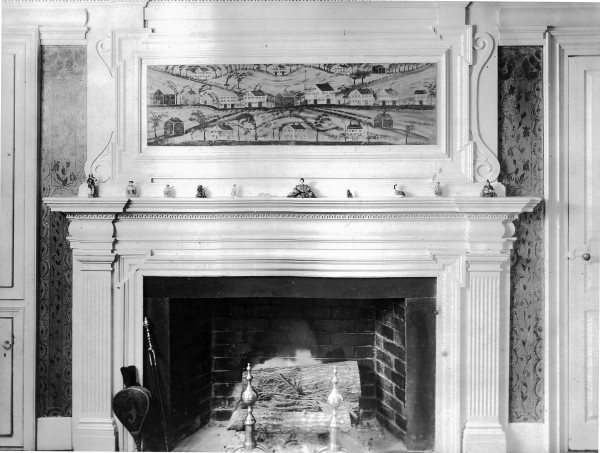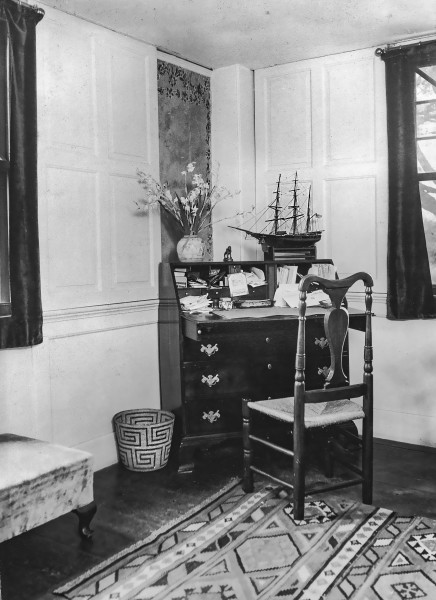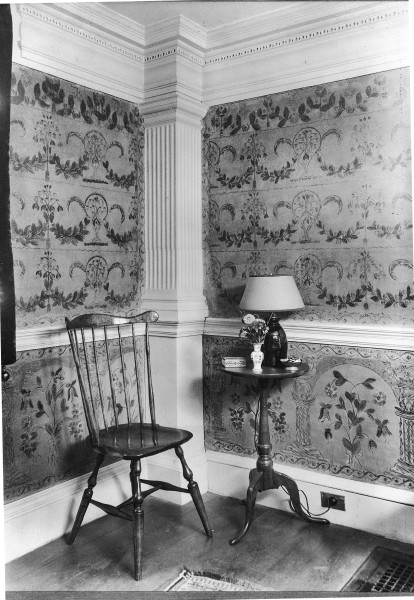As an Amazon Associate, we earn from qualifying purchases made through affiliate links.

A 1920s photo shows a mural and paint-decoration around the Georgian mantel that remains in the dining room today.

A photo from Platt Hubbard’s album reveals furnishings similar to a contemporary vignette. The outdoor portrait is also from Hubbard’s album.
The Wade–Tinker house in Old Lyme, Connecticut, was built by the Wade family, generations of whom occupied the property from 1686 through 1922. The 1755 homestead once boasted wall frescoes, hand-painted in the 18th century.
In 1922, the Impressionist painter and printmaker Platt Hubbard bought the Wade house from matrilineal family descendants named Tinker. Hubbard and his partner the distinguished lawyer Walter Magee set about restoring the house. They also hired the Olmsted Brothers, the largest American landscape-architecture practice at the time, who would create formal gardens out of the barren former farmland.

Paint decoration once in the dining room.
Hubbard (a member of the Old Lyme Art Colony) and Magee found the fresco paintings under several layers of wallpaper, and had them restored. Twenty years later, a fire destroyed the walls. But we have a record: a 1925 article in Country Life magazine documented the house and the wall murals. The murals are also recorded in the book Early American Wall Paintings by Edward B. Allen.
Owners Hubbard and Magee had the foresight to document everything they did to the house and garden. Their photographs, drawings, and letters are archived in a collection at the Florence Griswold Museum in Old Lyme.







